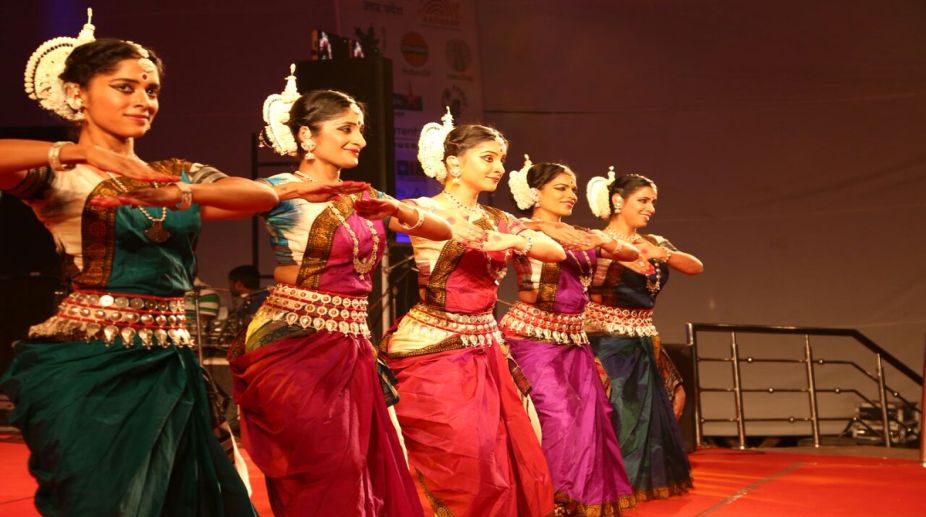My art is my therapy, says artist Neeraj Bakshi
Bakshi says animals have a special role in his theatre, as they seem to connect directly with the observer as the ardent human self, ‘breaking the fourth wall’.

(Photo: Twitter)
Summer months are the dry season in the Capital's cultural calendar, when music and dance programmes become scarce. This is the time when music and dance workshops attract the youngsters to learn the art form under capable Gurus (teachers).
This critic was lucky to visit two such workshops, held under the guidance of two renowned Odissi and Kathak Gurus. Manasa Studio presented Summer Odissi Dance Workshop by Guru Sharon Lowen, promising a short course in Yoga.
Odissi technique, Hasta Viniyogas, Talas, Pallavi, Abhinaya to Moksha along with the concluding performance were witnessed by invited guests.
Advertisement
Kathak exponent Guru Prerana Shrimali conceived Kalaavart, her Kathak workshop with a different perspective of a holistic approach towards this art form which, according to Guru Kumudini Lakhia, has become a game of power, showing off just the umpteen Chakkars, or pirouettes.
Kalavart, spread over three months, has three day sessions each month covering Kathak and Poetry in July, Kathak and Painting in August and Kathak and Music in September, exposing students to the subtlety of this art form that engages with poetry, painting like stances and, of course, music, which is the lifeline of any dance form.
The students of Guru Sheron Lowen offered their presentation starting with Mangalacharan, a prayer by Arjun as an invocation to Lord Krishna from Vishnu Sahasranamam, choreographed by Guru Sharon Lowen herself that opened with the serene strains of Alap in raga Bairagi, with the artistic entry of the students that comprised male and female dancers of all ages and nationalities.
Guru Sharon Lowen had inspired them all in the very beginning with her pep talk: "You have just learnt the basic technique of Odissi in this ten-day workshop. So don't worry about perfection, just try to do your best. This is just the beginning.
You will polish and perfect it with practice." The students really did their best not only in the opening Mangalacharanabut also the following Bilahari Pallavi and the Abhinaya on the Oriya song composed by late Bhubaneshwar Mishra and choreographed by Sharon's departed Guru, the one and only Guru Kelucharan Mohapatra.
Among the students Vishwanath is being groomed under Guru Sharon Lowen for the past 15 years. Hence his perfection was expected but there were others like Nitisha, Jigya and Devavrat from Assam, a teacher by profession, who had come to join this workshop just for the sake of his love and devotion for the dance form.
Then there were Patrick from the US and Natalia from Canada, who come on a regular basis in their winter vacations to learn Odissi under Guru Sharon Lowen. It was a delight to watch them all dancing with the lyrical grace of this dance style. Along with the practical classes they were also privileged to learn about the Natya Shastra and Bhakti, the spiritual essence of Indian classical dance, by the profound scholar Kamalini Dutt. Kalavart was totally a different kind of experience.
Normally one expects certain items being taught in a Kathak workshop like Thaat, Aamad, Paran, Gat-Nikas, GatBhaav or a Thumri, Ghazal or Bhajan for Abhinaya; but here the students were exposed to the subtlety of poetry and its interpretation through the language of Kathak. Prerana taught it individually explaining that the thought process or imagination of two people are different.
Hence they can't emote exactly like each other. There should be one's own thinking process when one deals with poetry. It creates different images in different minds. Your art becomes original and authentic when it deals with your individual ideas and feelings. Prerana talked about the different layers of meaning of a poetry and explained how the delicacy of Urdu language demands more sensitivity and imagination to go to its deeper layers while interpreting a Ghazal.
She cited a couplet by the classical poet Ghalib "Banakar Faqeeron ka hum bhes Ghalib/ Tamasha-e-ahl-e karam dekhte hain". It was not the common Sher-o-Shayari, talking about "Sharab and Shabab"; it talked about the deeper philosophy. She also introduced the students with the "Sanchari" that incorporated stories of similar Bhavas or references that enhance the emotional content of the poetry. Invited scholar Brijendra Rehi deliberated upon the Nathdwara Parampara and the poetry of that region, its various metres like Doha, Savaiya, Soratha, Chaupai and Chhappay. He also suggested not to fiddle with the language of the poetry.
For instance, leave "Vastar" like that only, don't correct it to "Vastra", the present version. One looks forward to the next session of Prerana's Kalavart, Kathak and Painting that she plans to deal along with well-known painter Manish Pushkale.
Advertisement